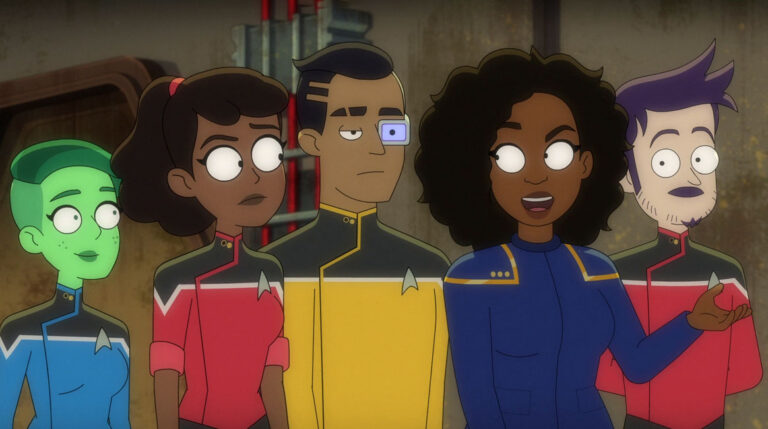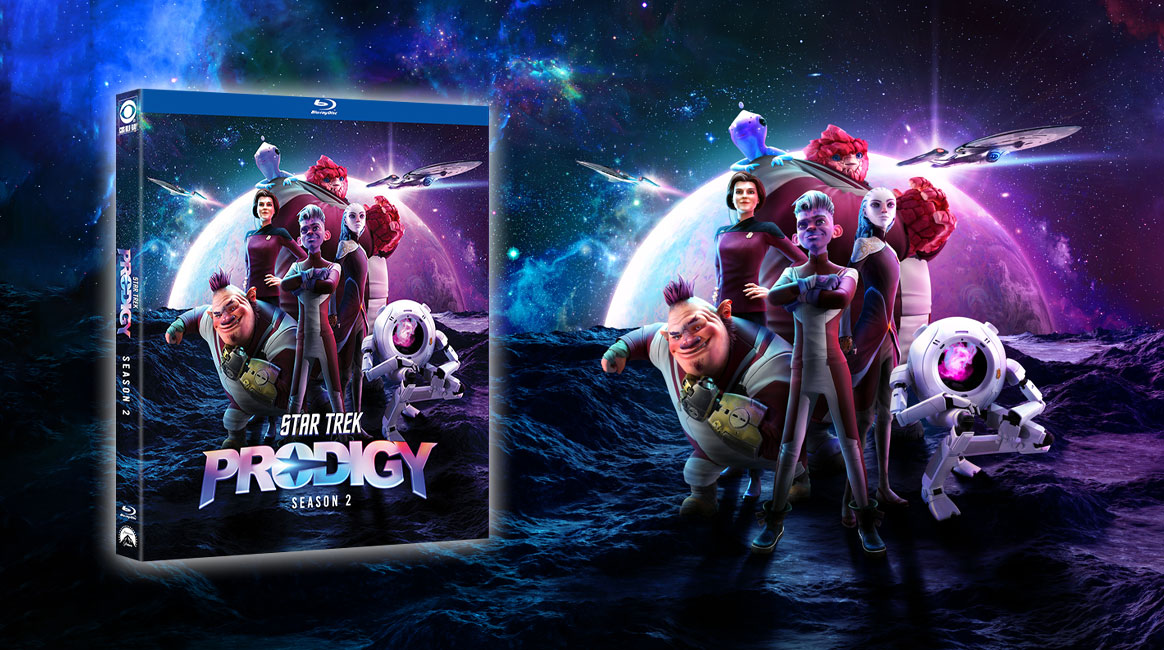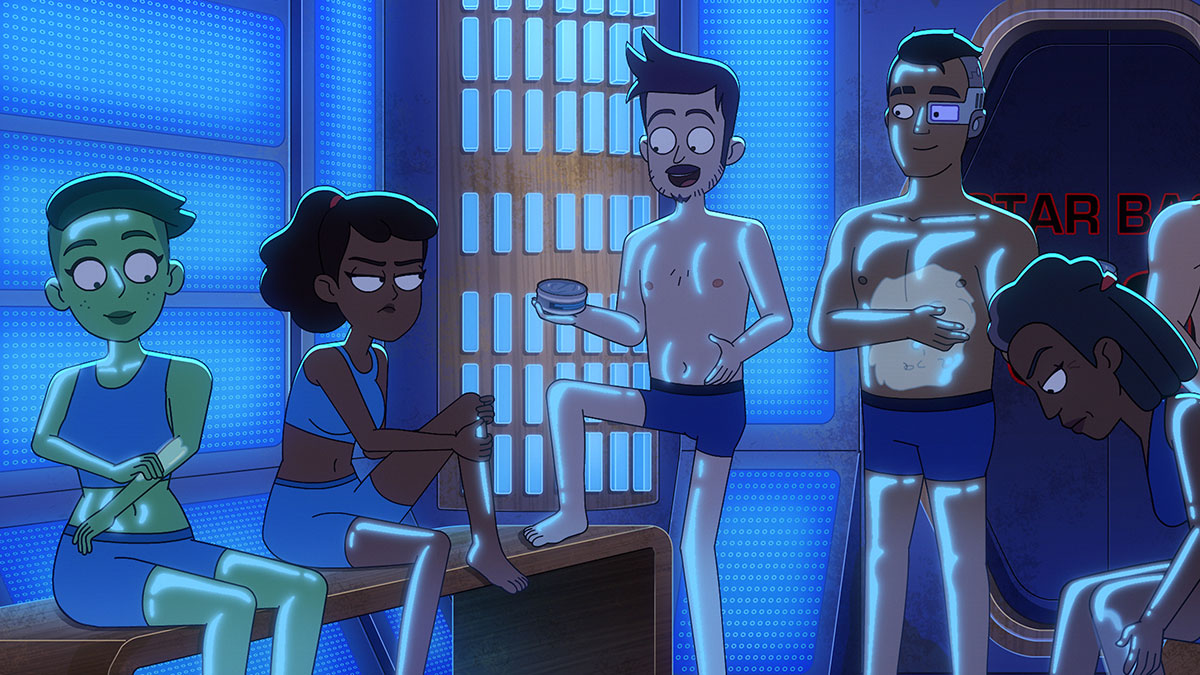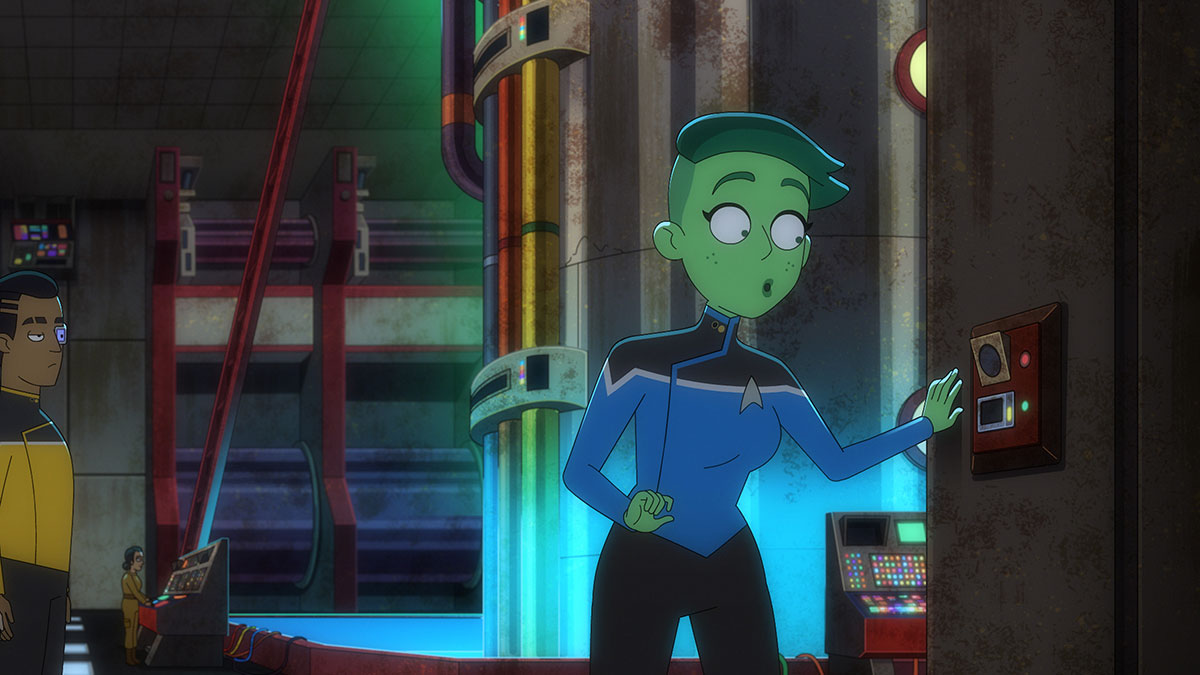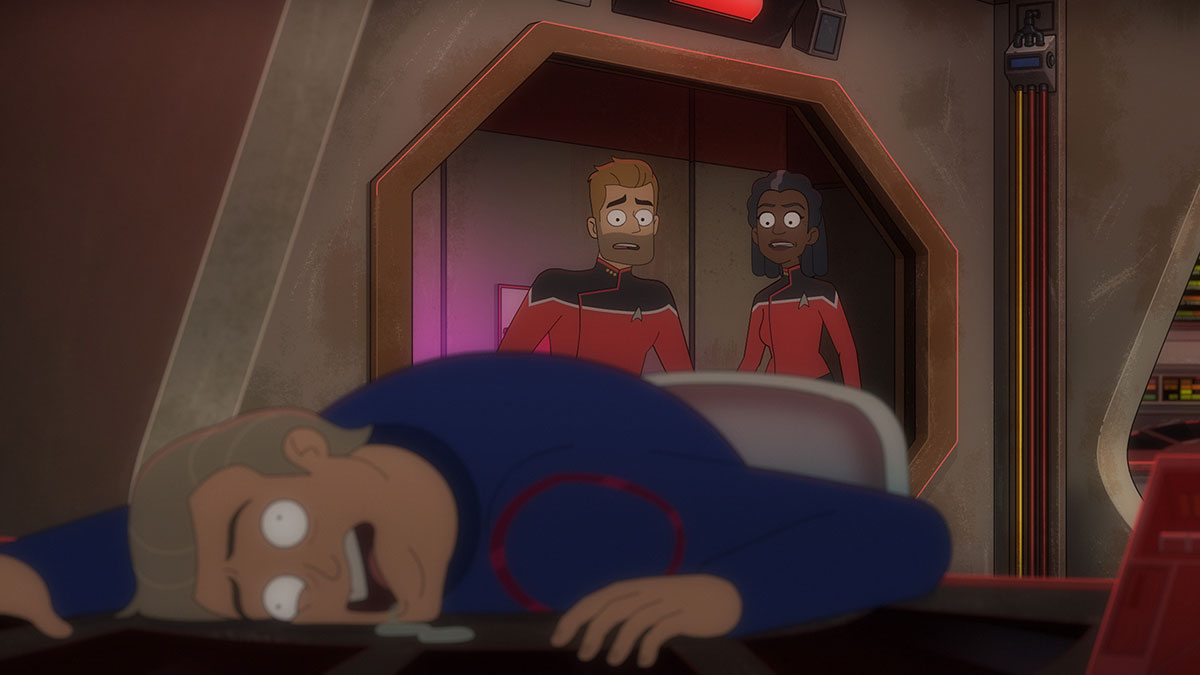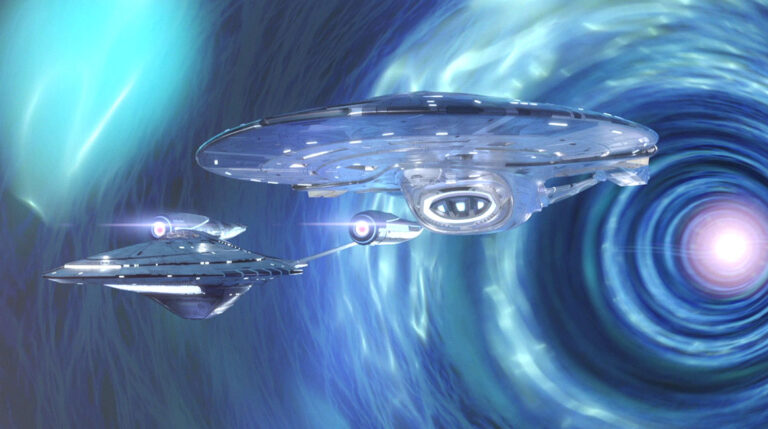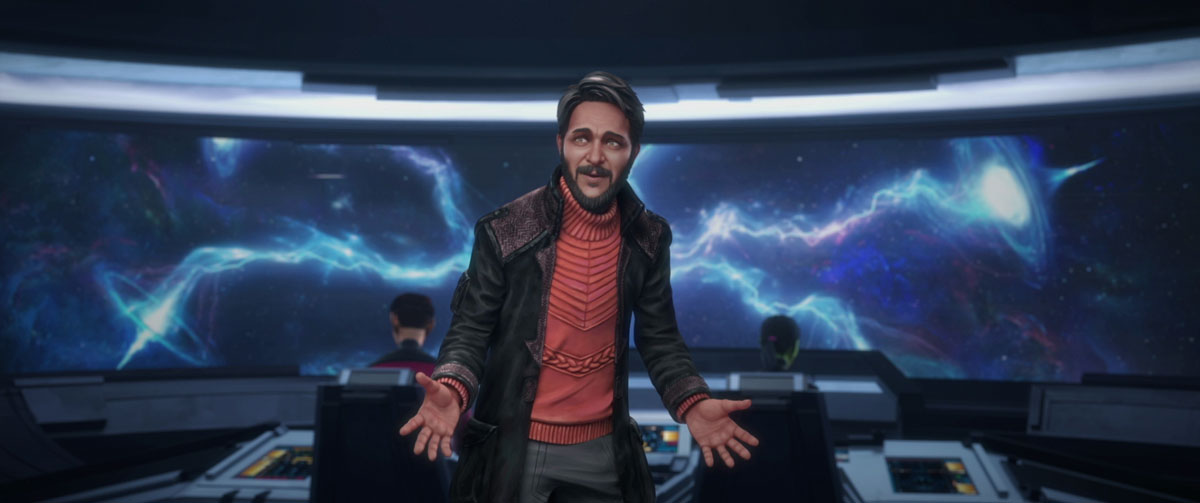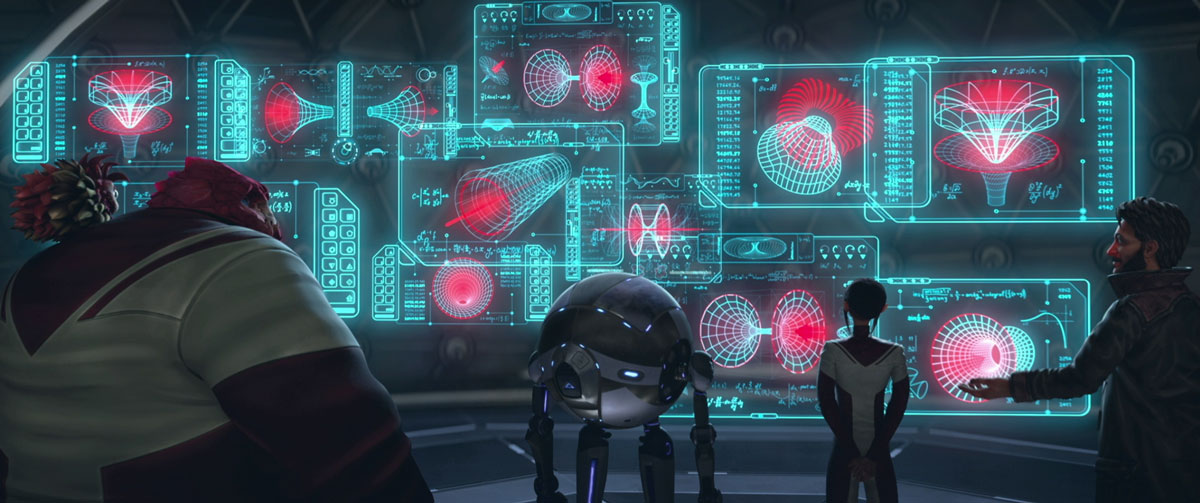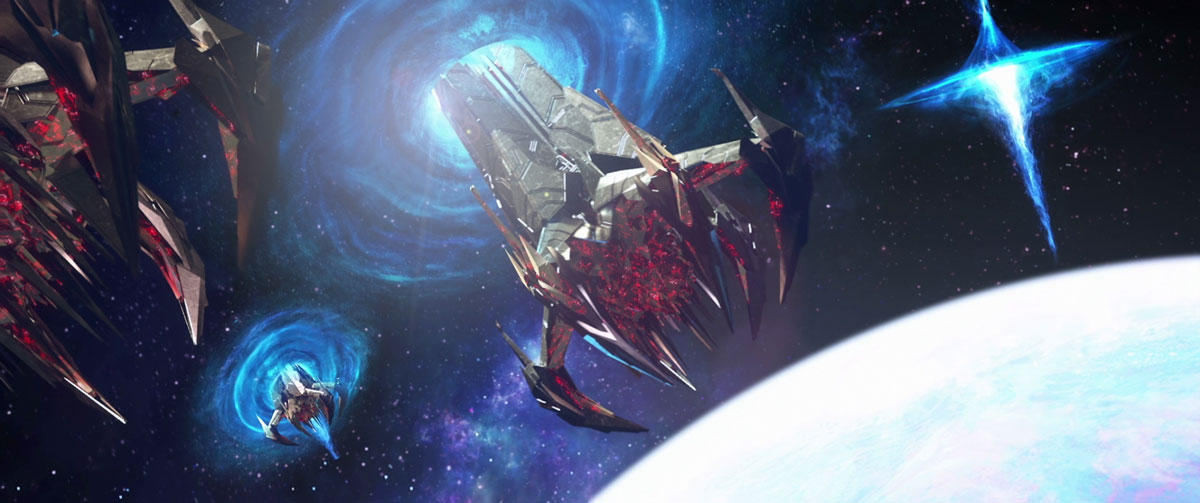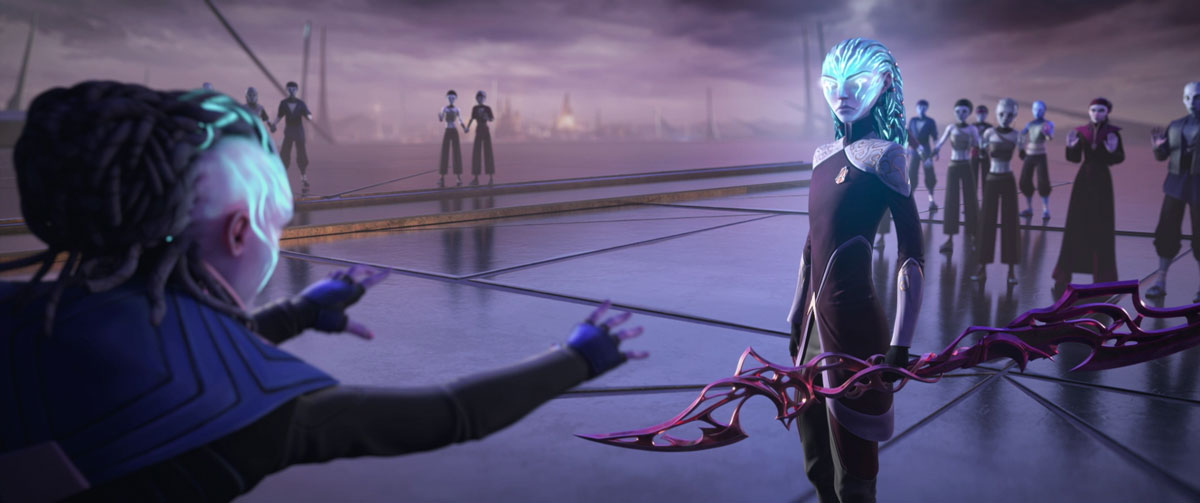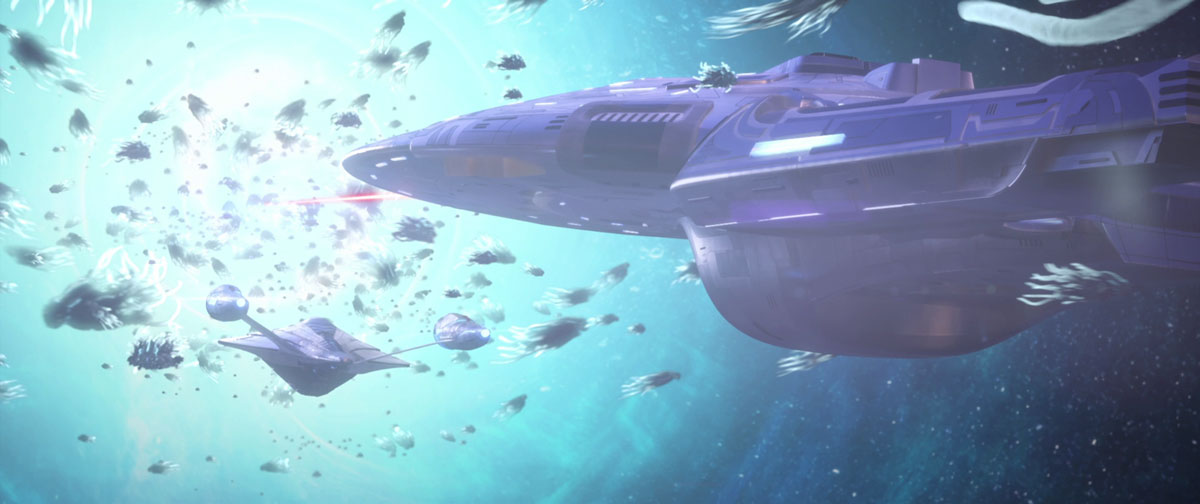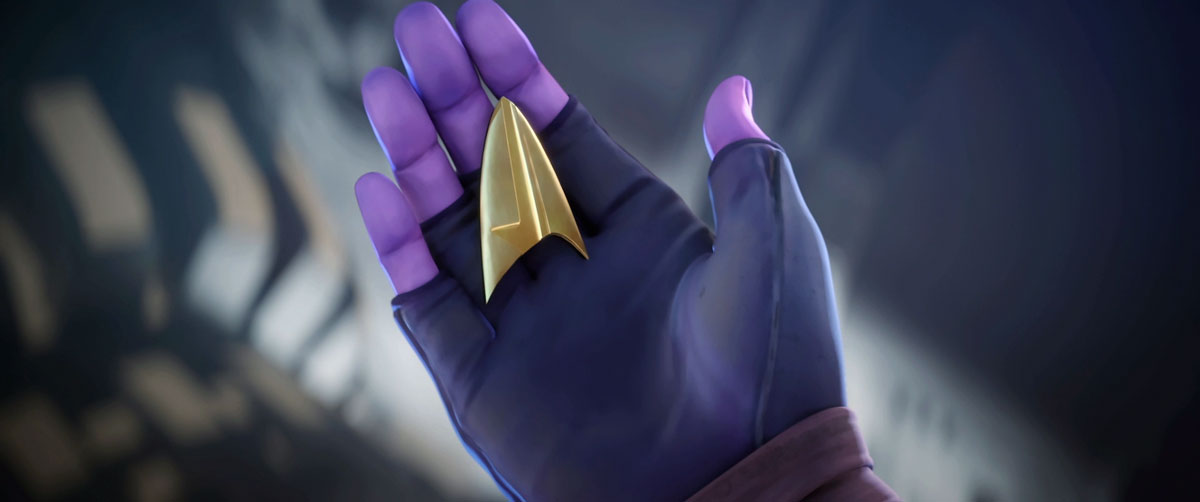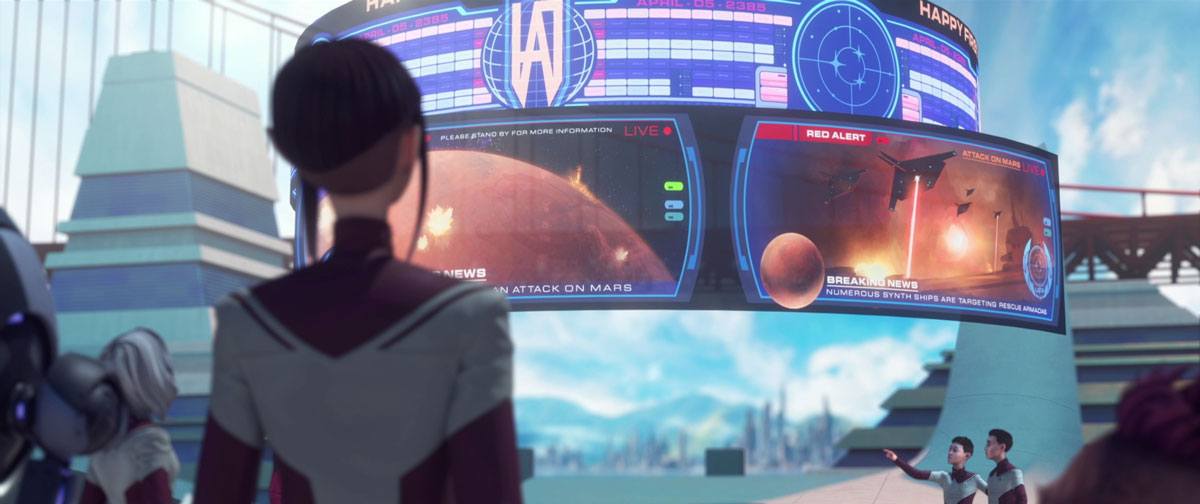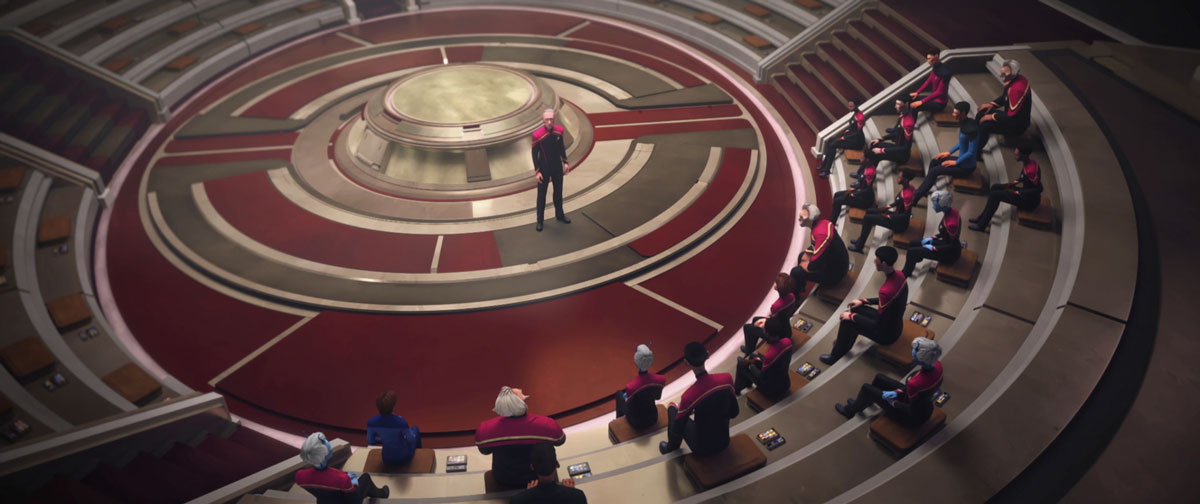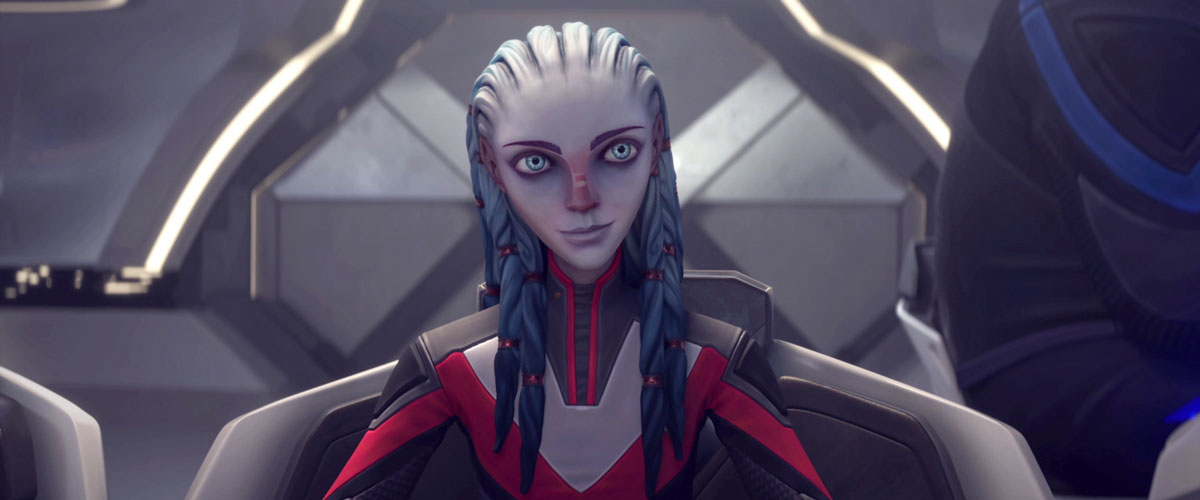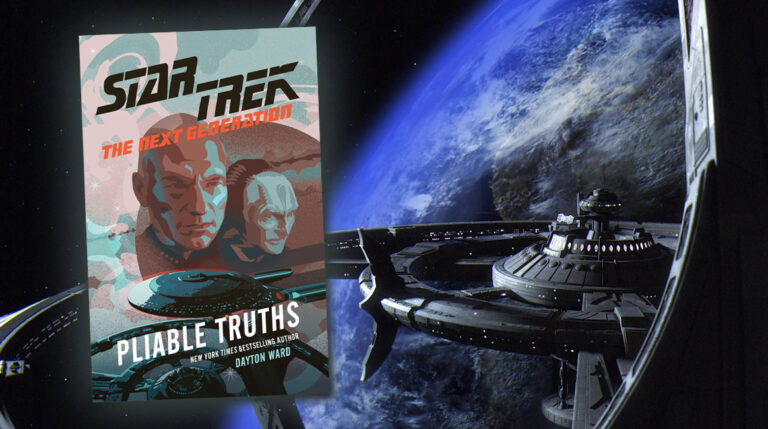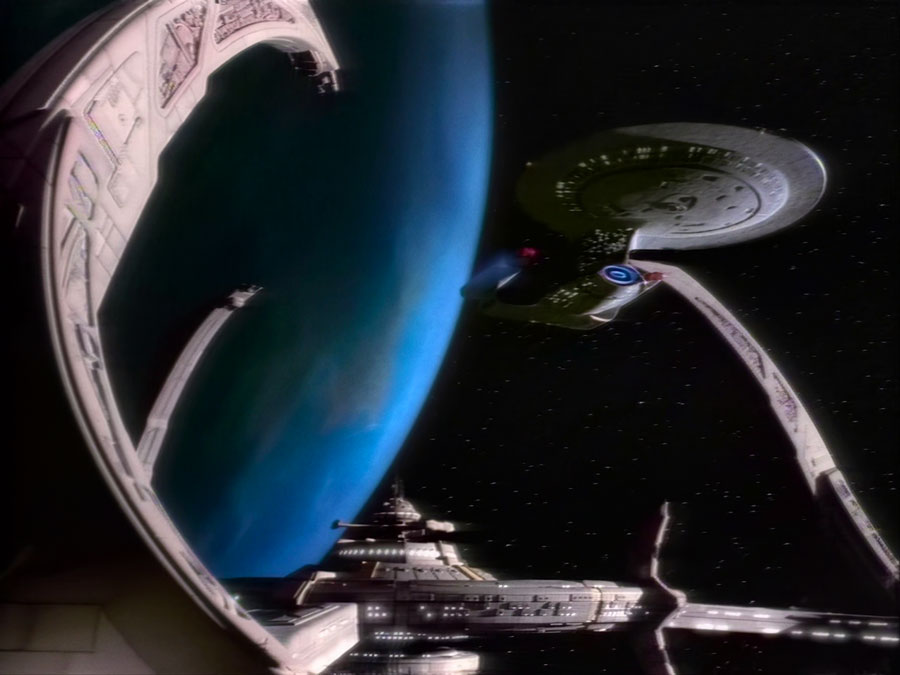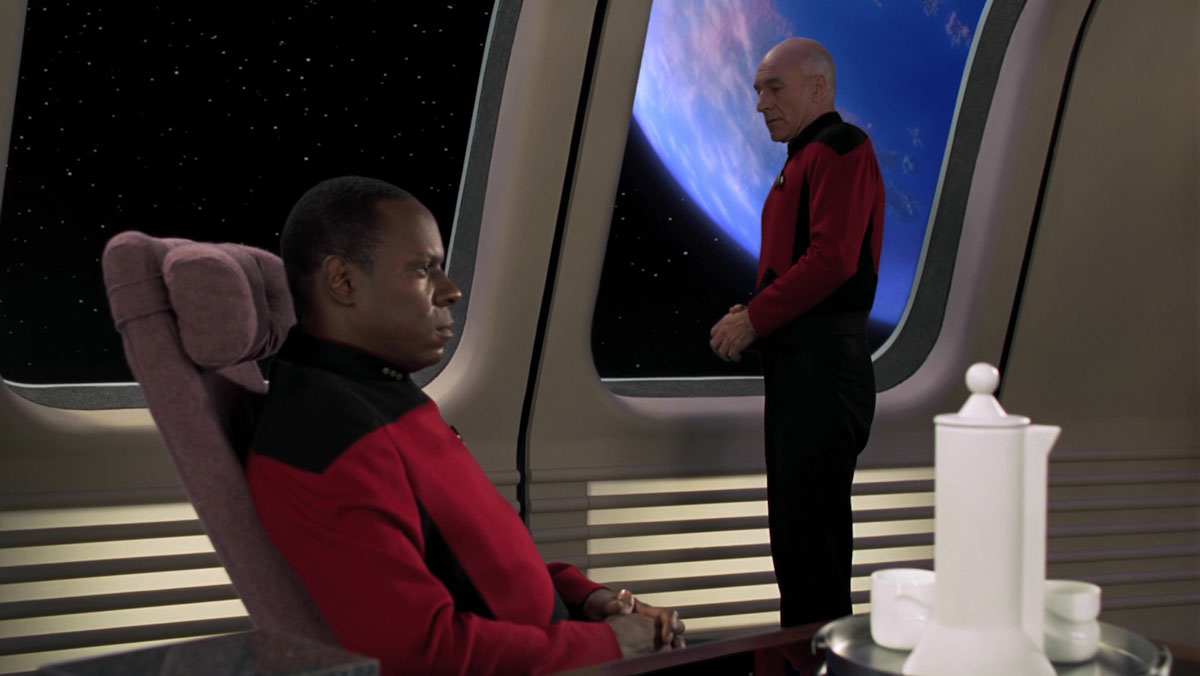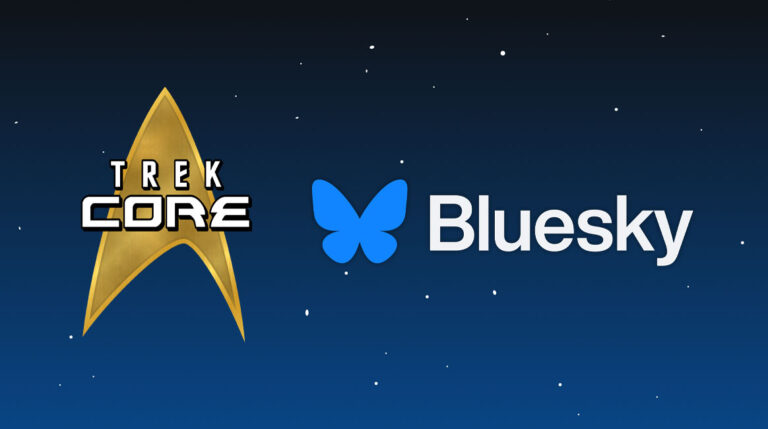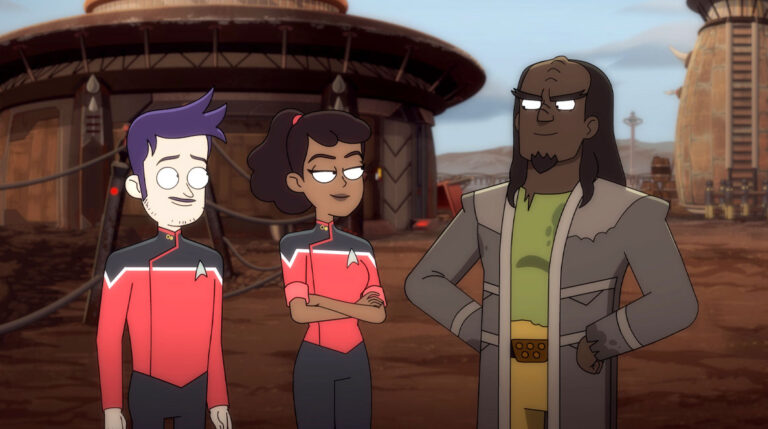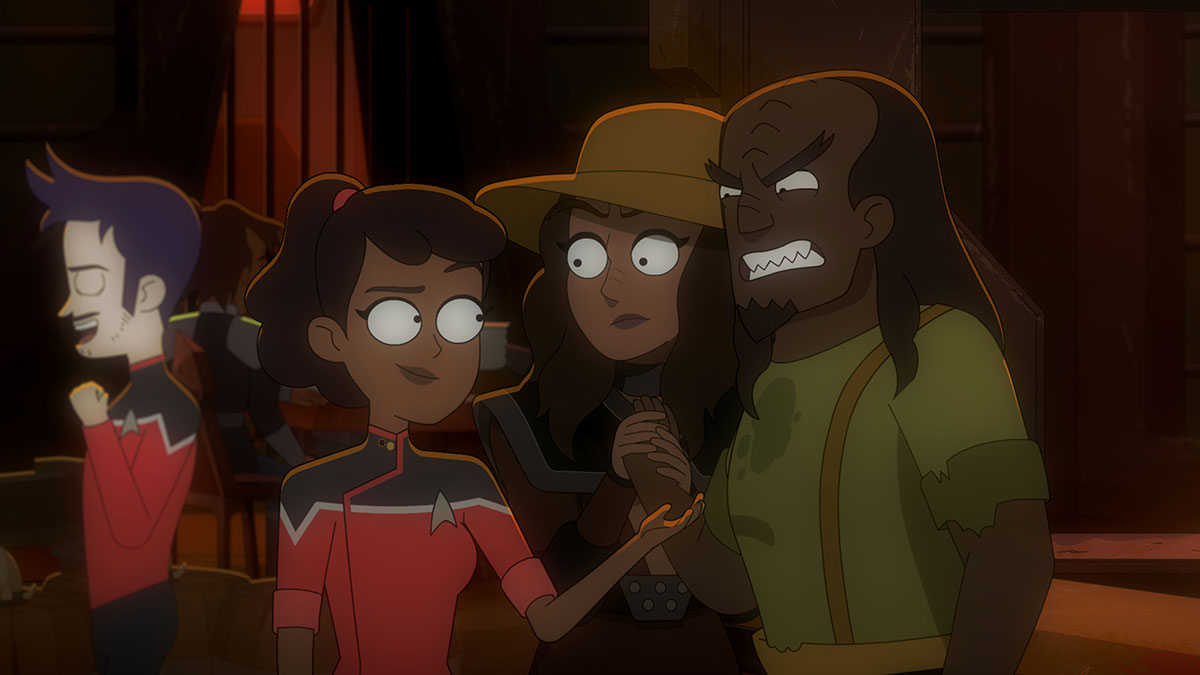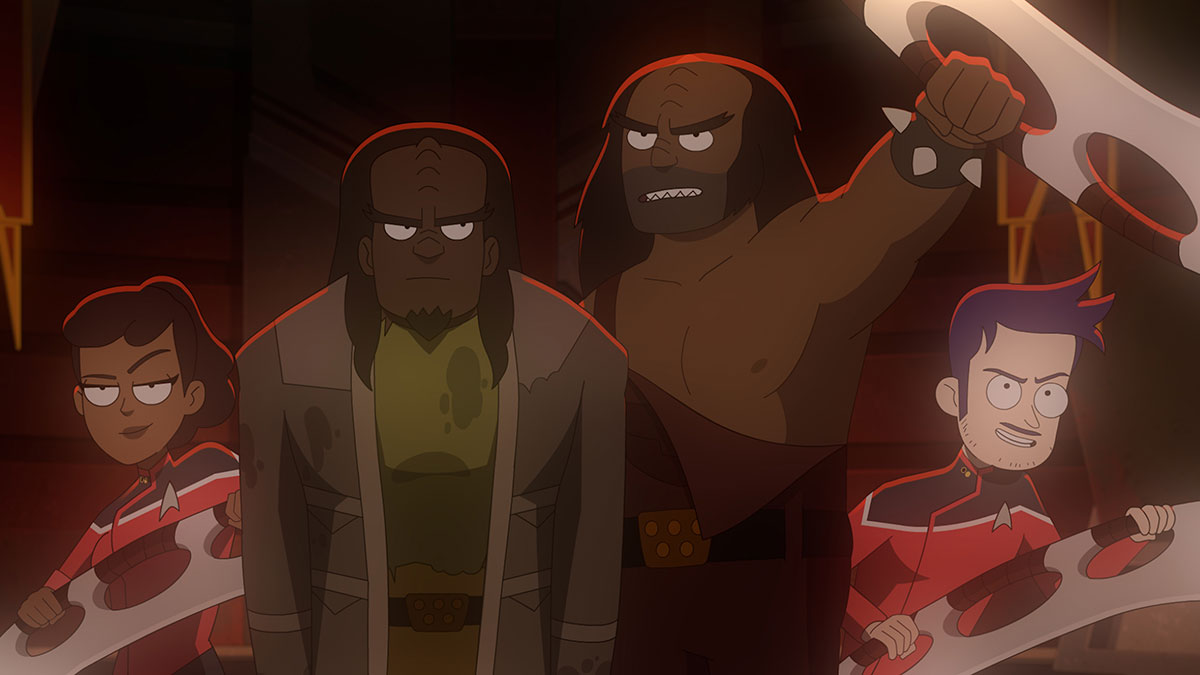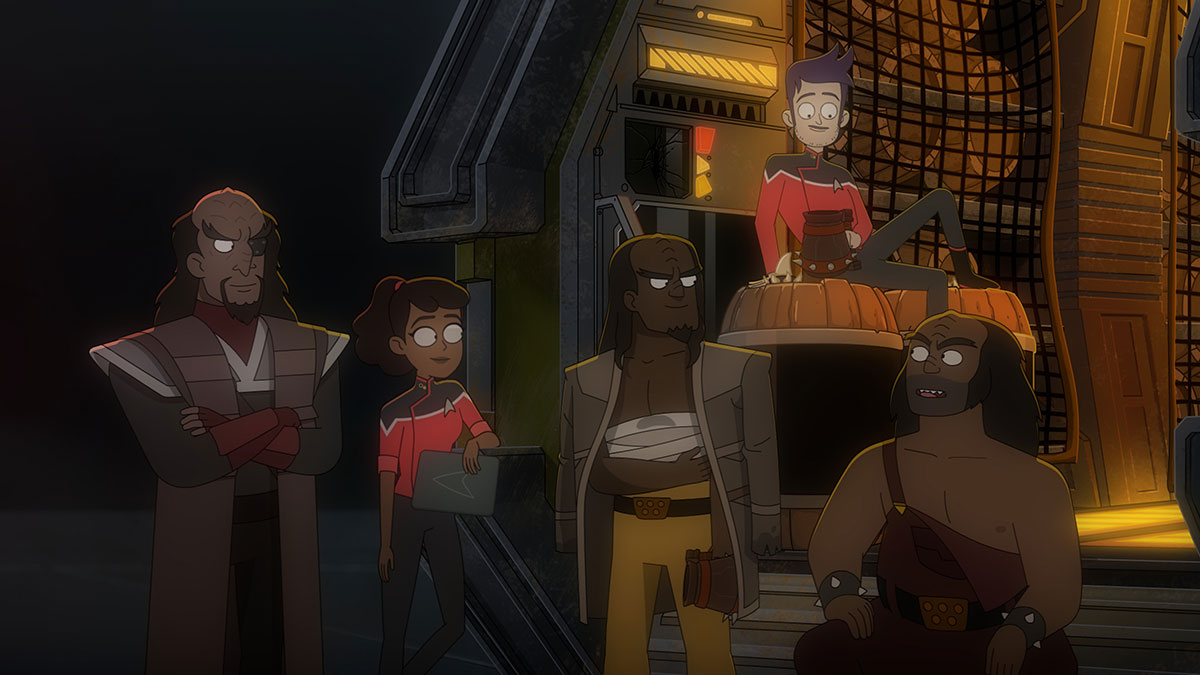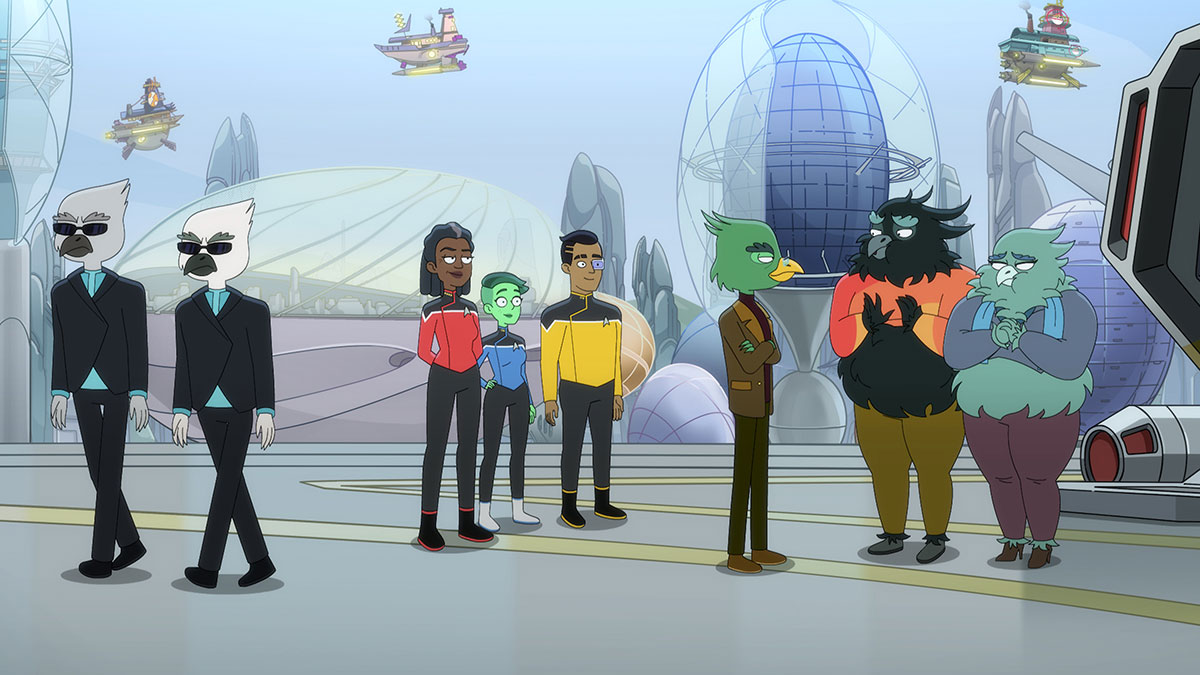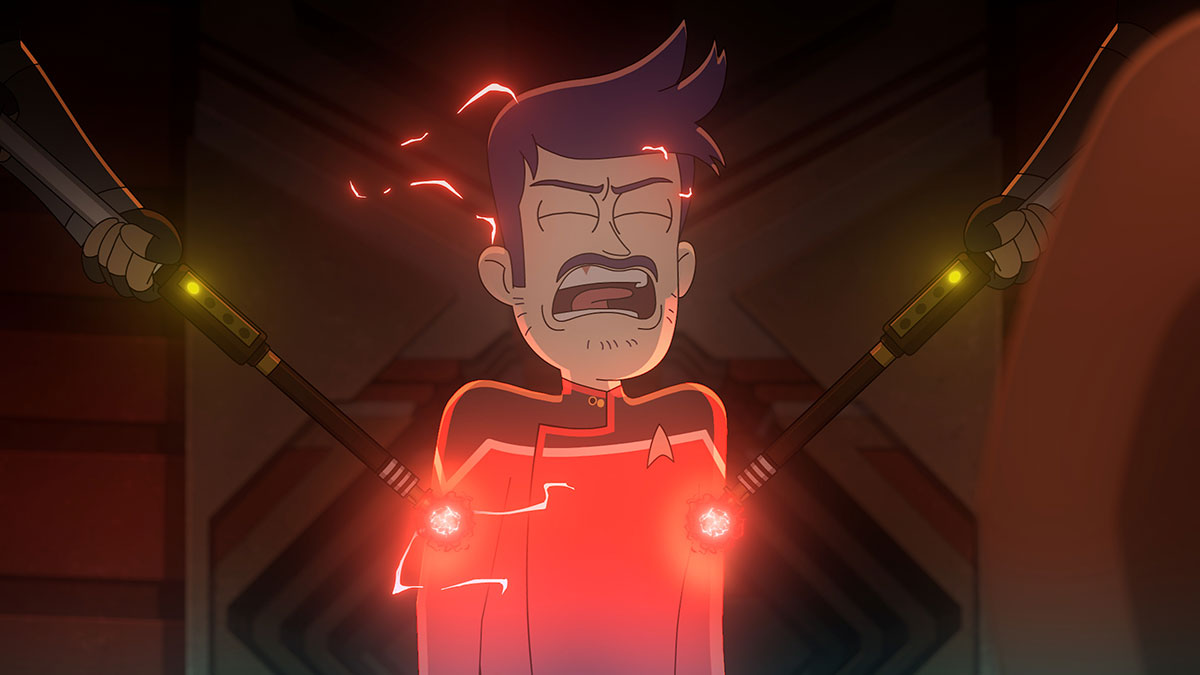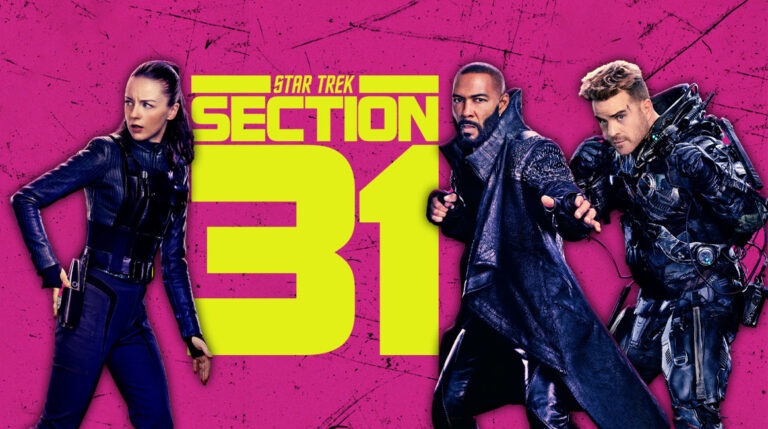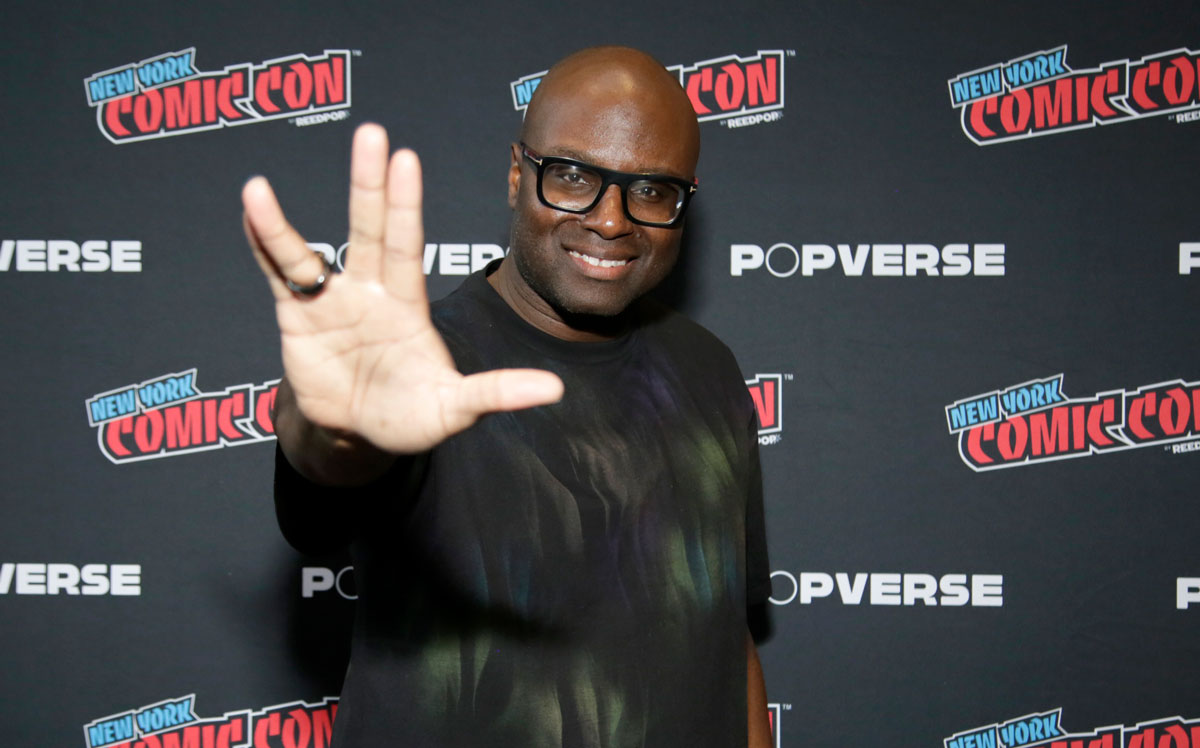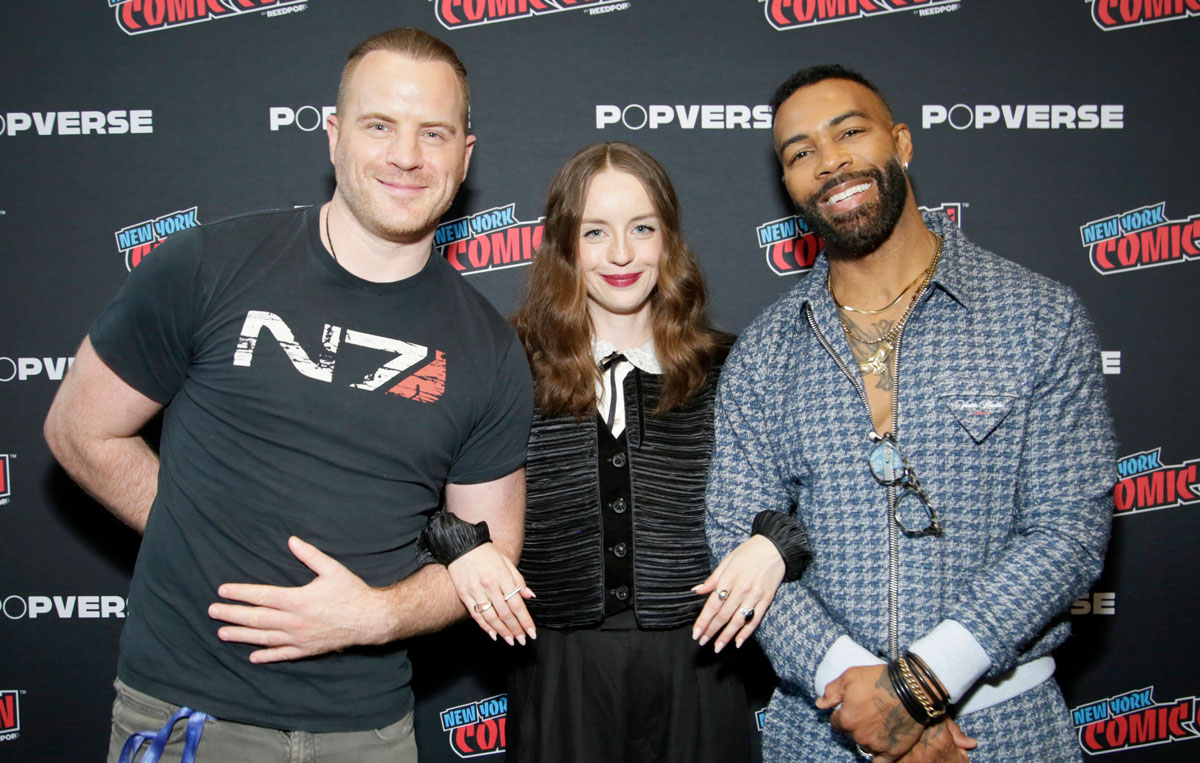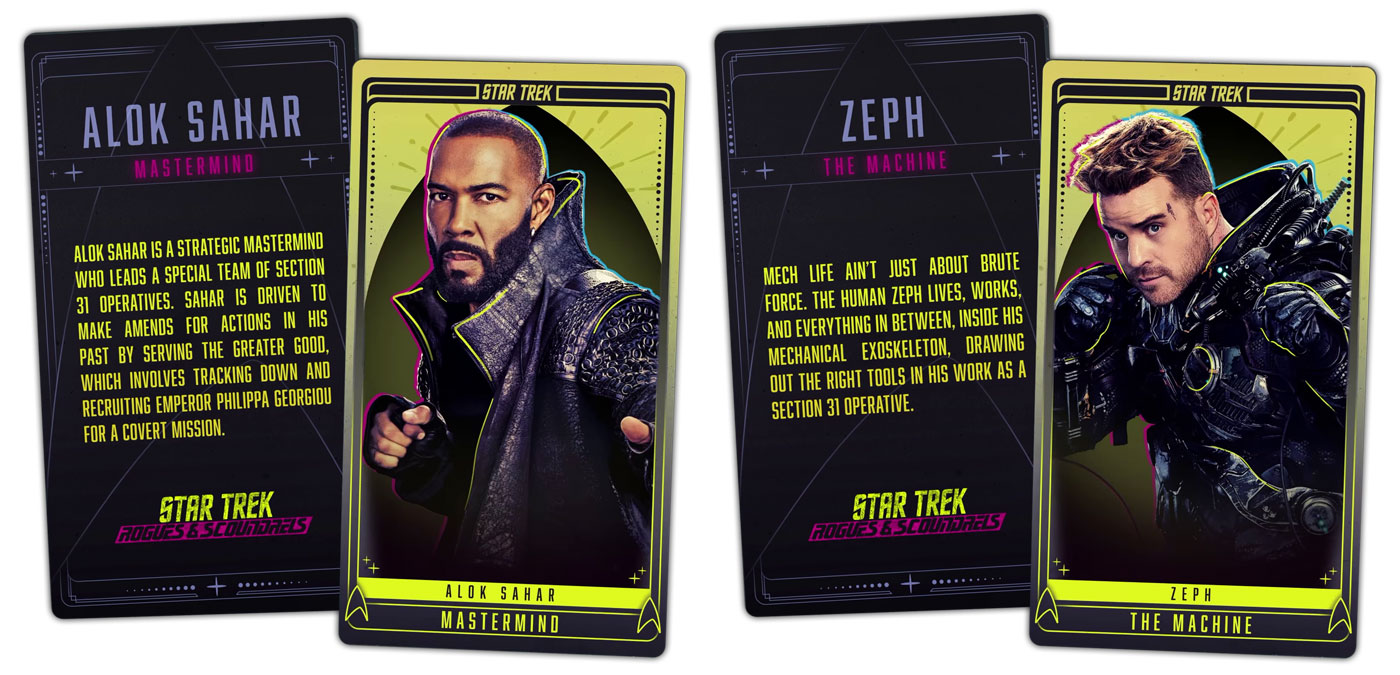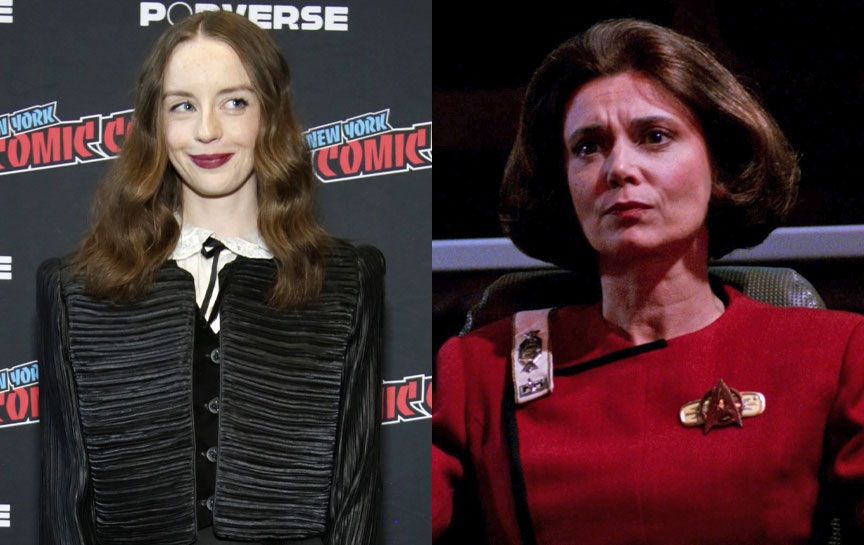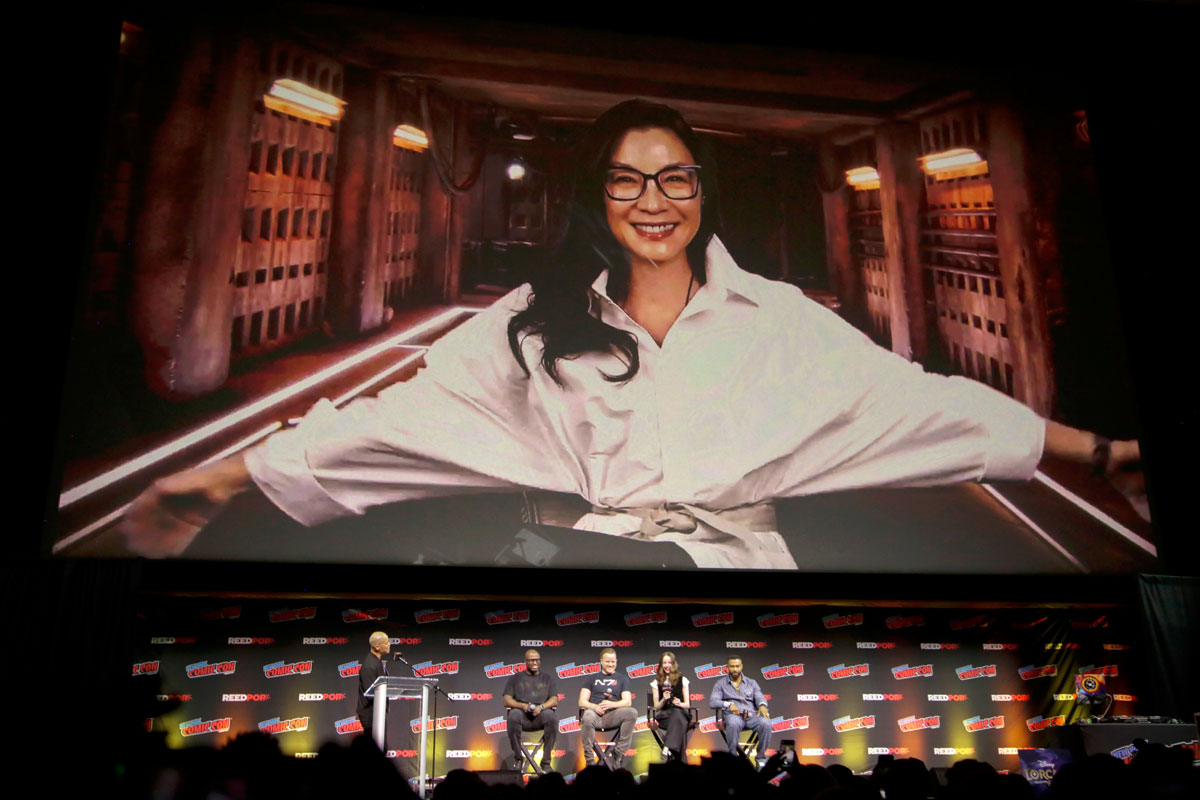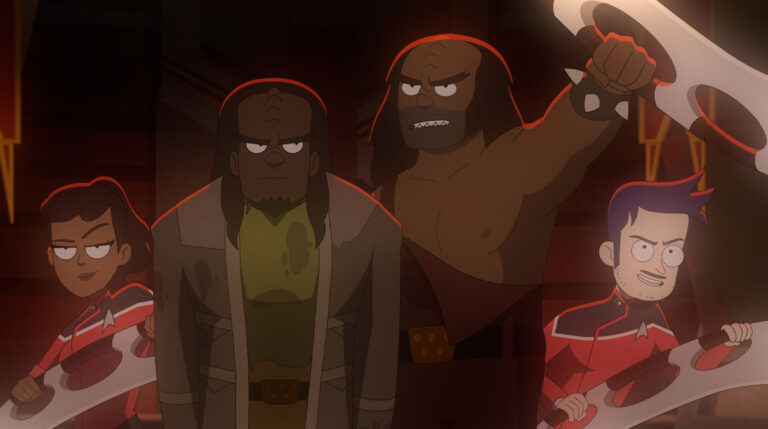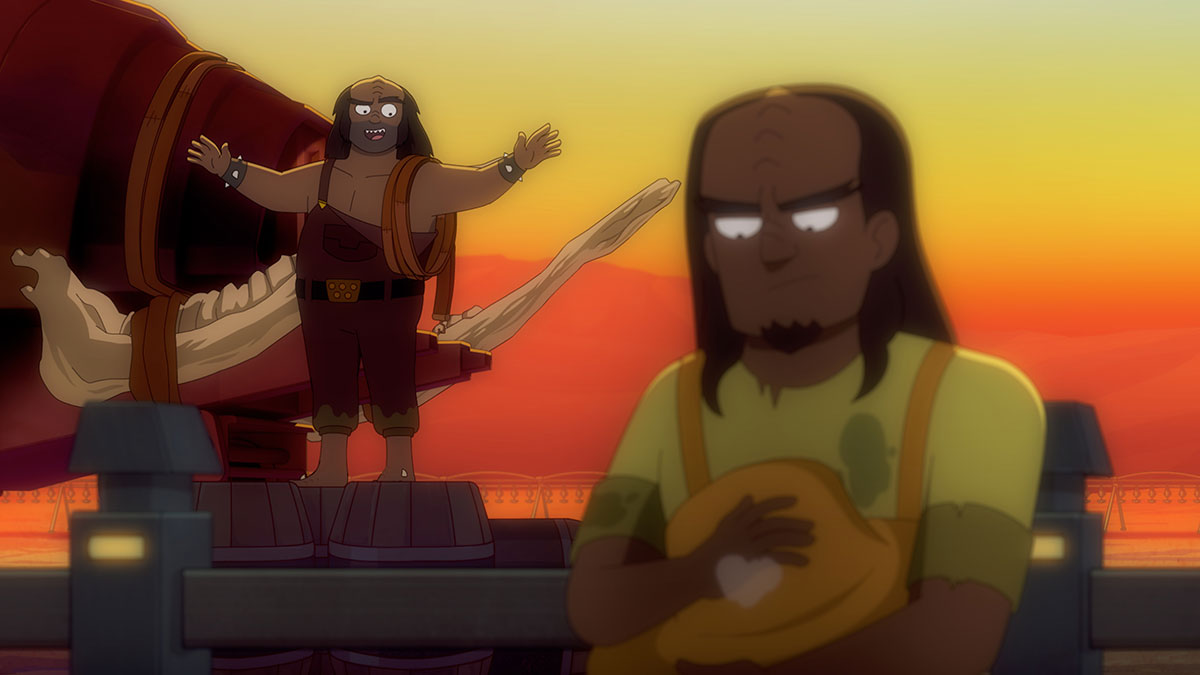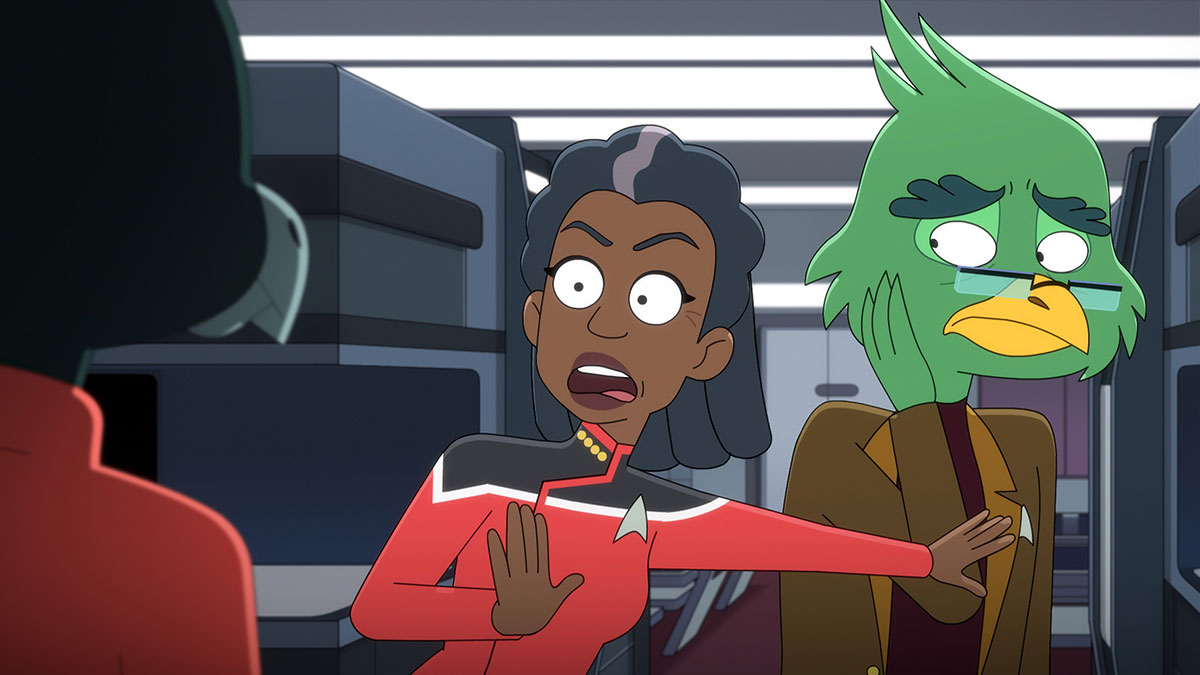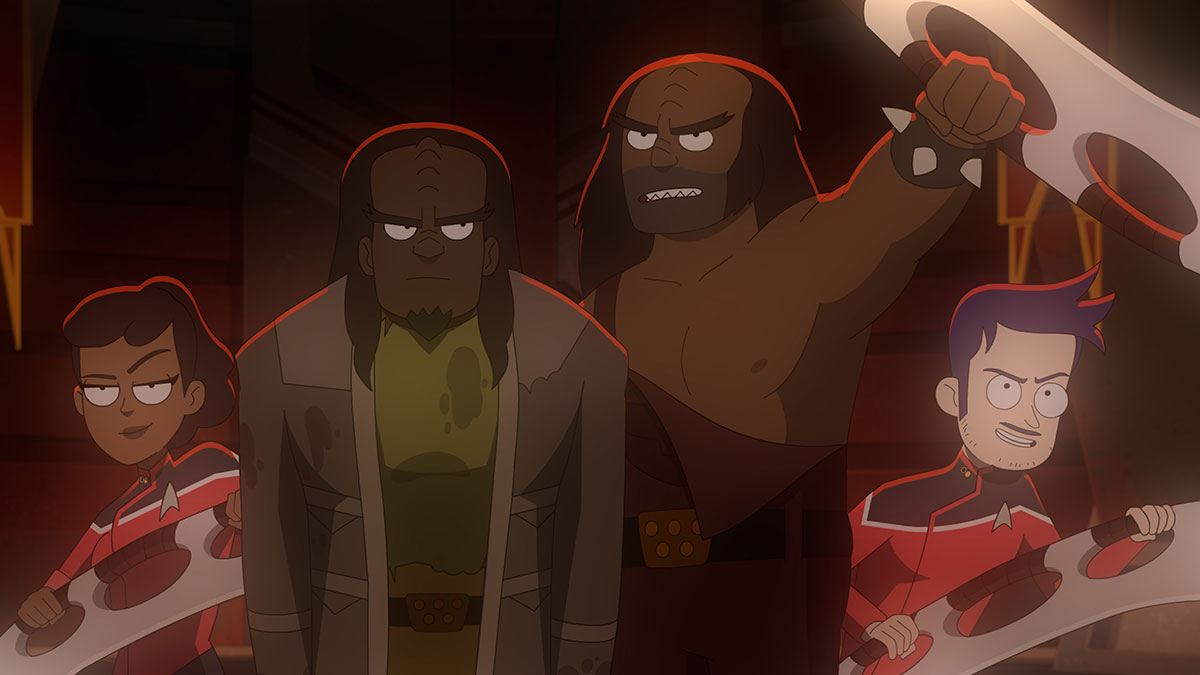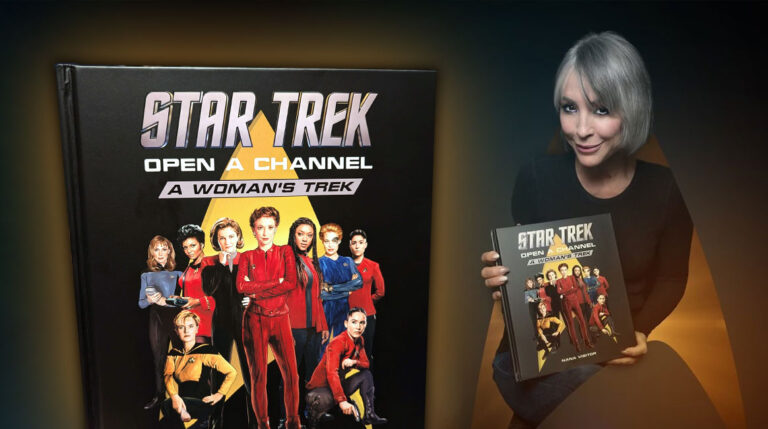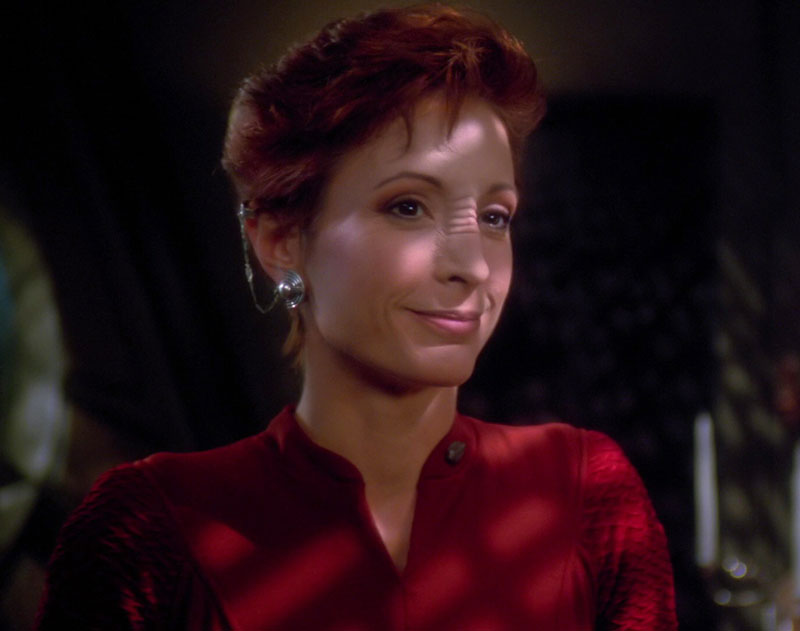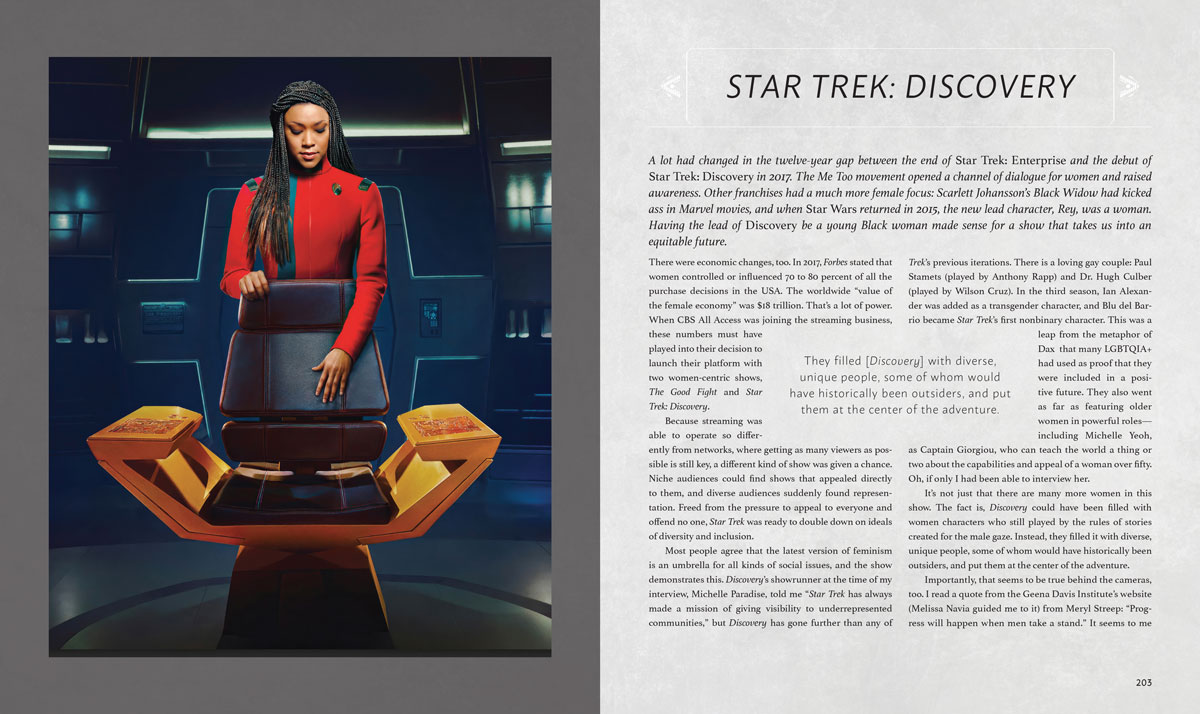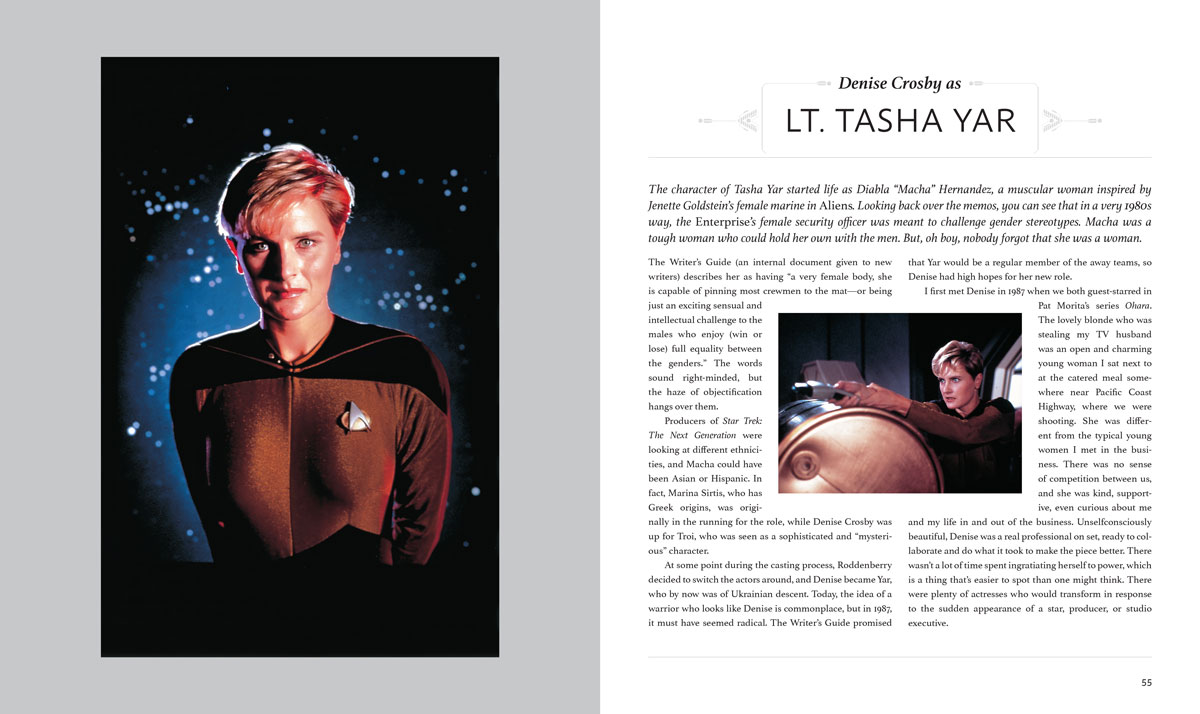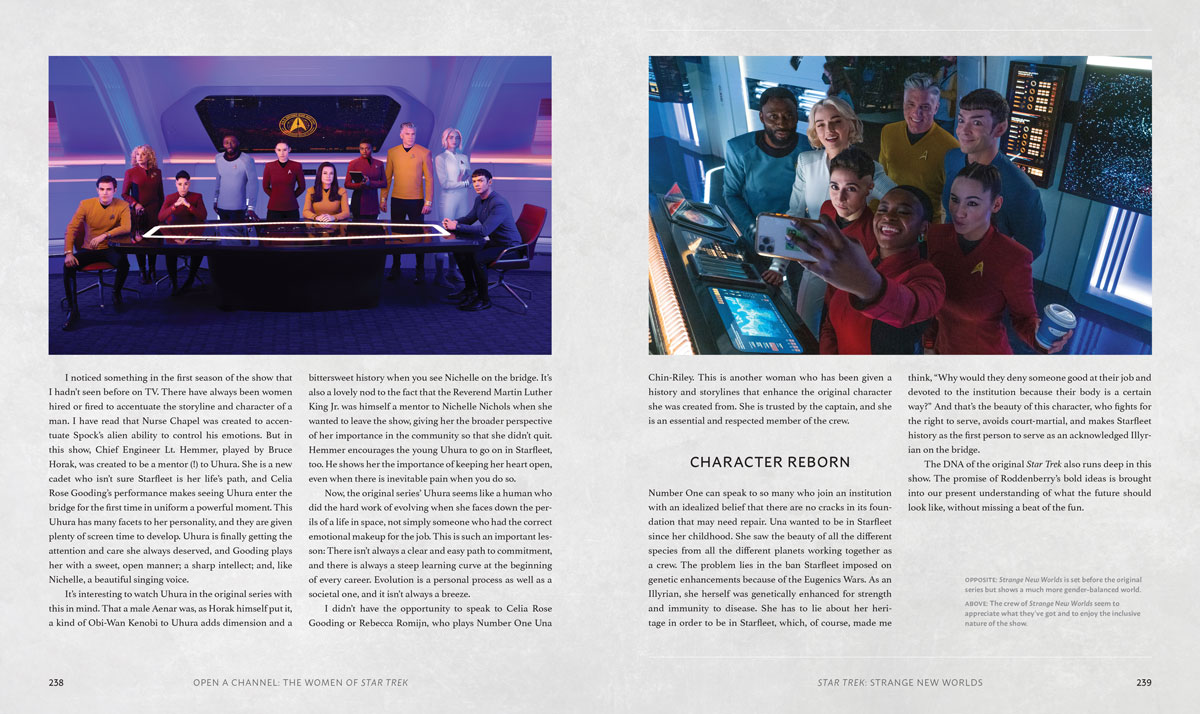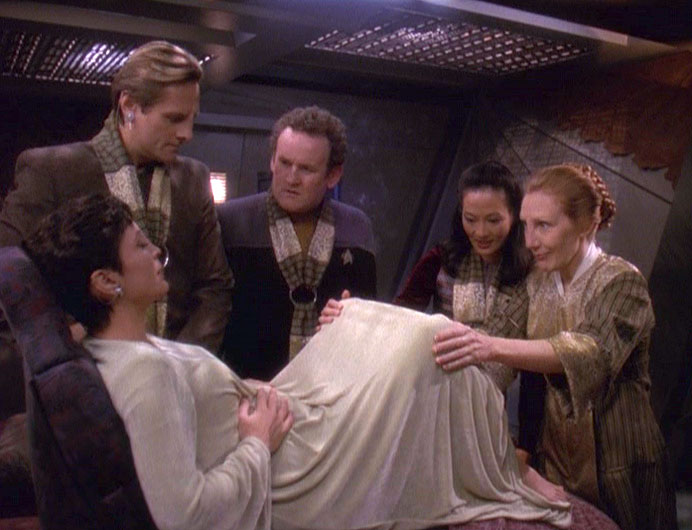Star Trek: Lower Decks adds some complexity to the most infamous starbase — and punchline! — in Starfleet history in “Starbase 80?!” when the Cerritos experiences a malfunction in its navigation processor and must seek assistance from the crew of Starbase 80.
In a fun caper through the dilapidated space station, “Starbase 80?!” extends and deepens the season’s overall theme about self-acceptance, and it being okay not to match up to others’ expectations… particularly when you don’t consider yourself part of the mainstream.
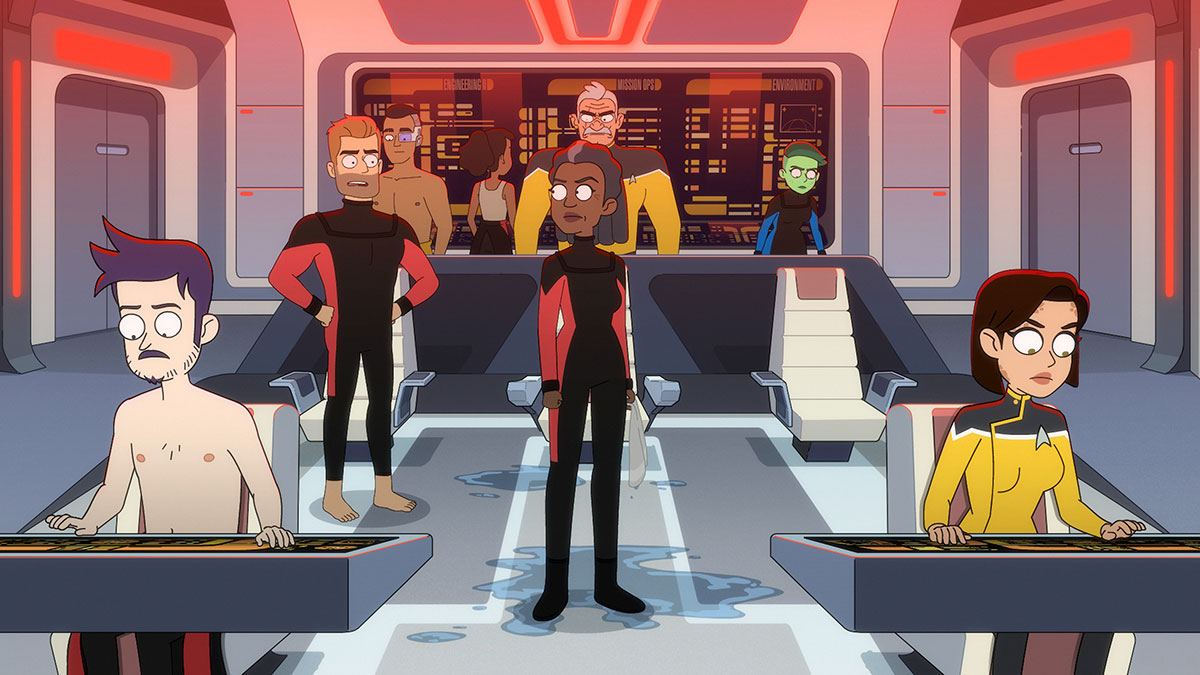
With their navigation process not functional, the Cerritos crew have no choice but to dock at Starbase 80 and make repairs. While there, the crew of the Cerritos begin falling into a zombie-like trance that Mariner (Tawny Newsome) believes is the Starbase 80 curse.
But it turns out it’s not Starbase 80 that is cursed at all, but the Cerritos crew, who are infected with an anaphasic consciousness (think “Sub Rosa”!) With the assistance of the Starbase 80 crew, the entity is captured and communicated with, while the Cerritos and Starbase 80 support each other’s repair needs.
“Starbase 80?!” is an episode about not jumping to conclusions and judging a book by its cover. The Starbase 80 crew are weird, and they do not fit into the traditional Starfleet box of how a crew like this should behavior — but they do allow their crew members to flourish, to get a second chance, and to find their own way a little outside the norm.
What Mariner initially dismisses as cursed or weird is instead what every good Star Trek fan group should be — a space for friends and colleagues to express their unique individuality and find acceptance in it.
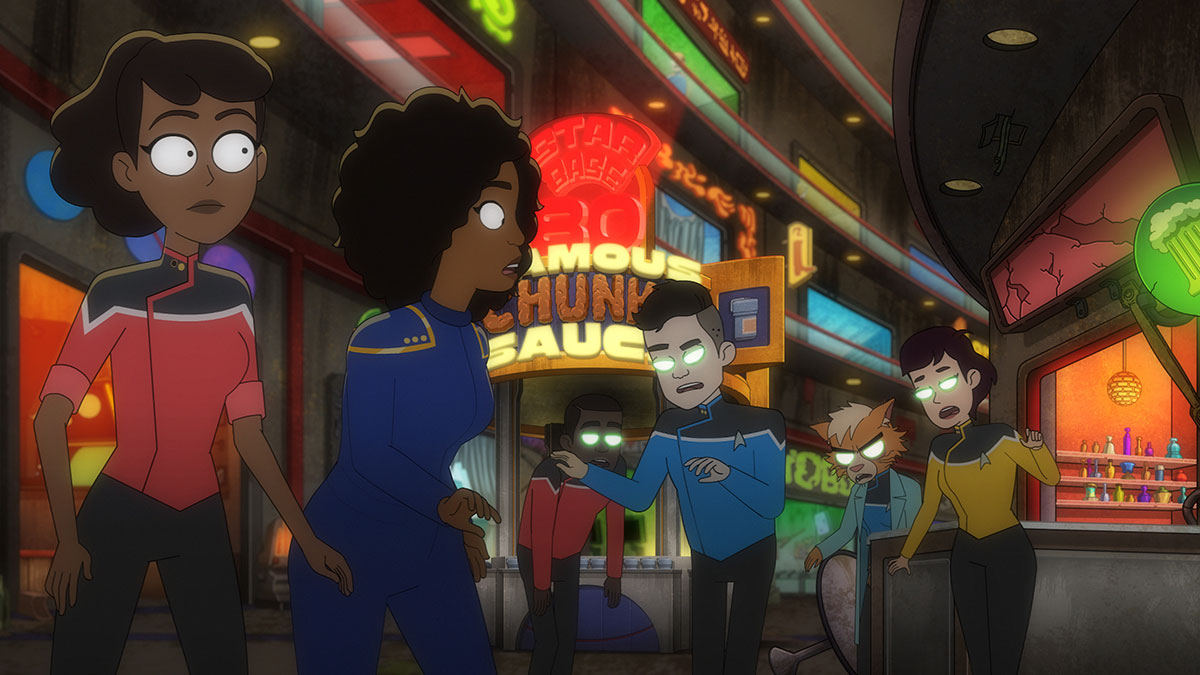
The episode is punctuated by two standout guest performances – Nicole Byer’s Commander Kassia Nox and Stephen Root (returning to Star Trek after over 30 years!) as Chief Engineer Gene Jakobowski.
Both provide endearing performances in their own right – Nox, who sees the potential in everyone, and Jakobowski, who isn’t going to let an opportunity for outside help from the rest of Starfleet pass him by. Does it stretch credulity that Jakobowski is quite that bad at his job? Sure, but it makes for some funny scenes with Captain Freeman (Dawnn Lewis) and Commander Ransom (Jerry O’Connell), so I can forgive bending the show’s realism more than I’m usually comfortable with for comedic effect.
“Starbase 80?!” is another episode that fits perfectly within the show’s overarching theme, but after a few episodes in a row about the same topic, in a season that seems to have this broader thematic meaning to its meta-narrative, by the halfway point the “love yourself for who you are and respect everyone’s differences” is a point that has been clearly and definitively made this season.
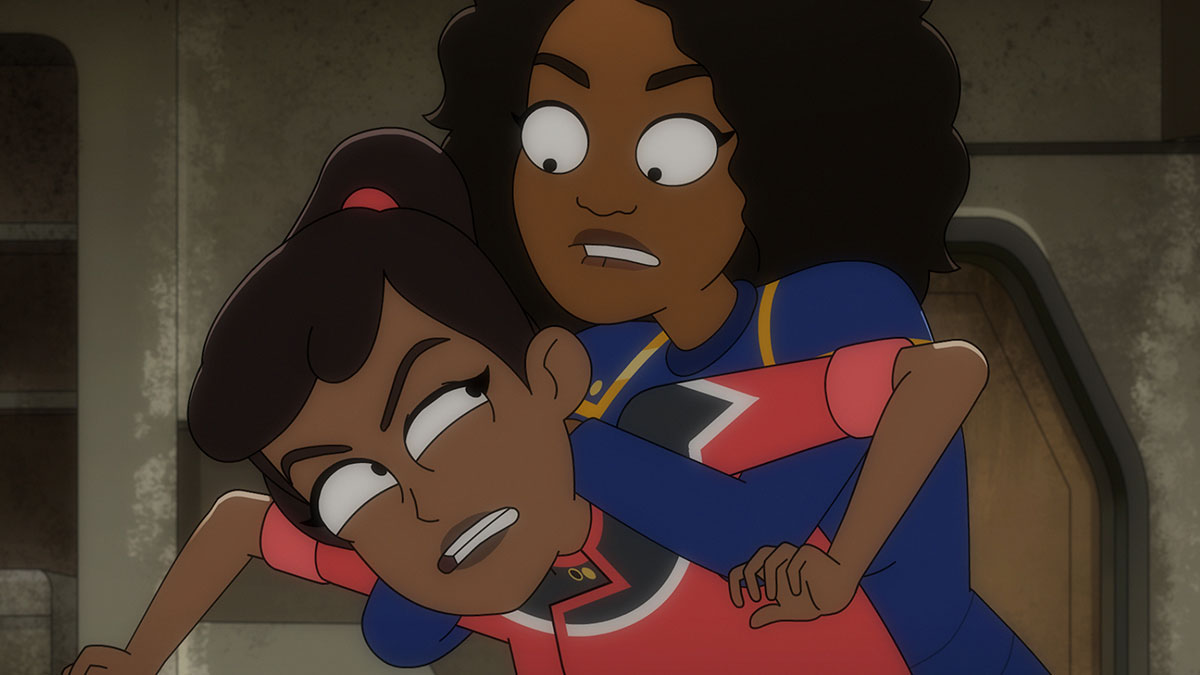
I am not saying that’s a knock on my enjoyment of the episode — it’s a lot of fun — but I get it already! Mariner learns not to misjudge Starbase 80 for being who they are this week, Ma’ah finds his own Klingon path in “A Farewell to Farms,” Tendi accepts her differences from the rest of Orion culture in “Shades of Greeen,” Rutherford sees the consequences of other choices in “Dos Cerritos,” and Boimler is clearly trying much too hard to be his unflappable alternate universe self… need I go on?
I am really interested to see — here at the halfway point of the season — how after laying these thematic foundations throughout the first half of the season the show will pivot towards its conclusion. The alternate universe trope, which was pretty absent this week, has been a great way of exploring alternative choices for the characters or considering the nature of choice and free will.
It will be interesting to see how the show builds on the foundation to crescendo this season and the show as a whole.
TREK TROPE TRIBUTES
- The ship experiences a malfunction that prevents it from attending a Starfleet conference is a definite trope. This episode most closely mirrors Captain Picard’s half-hearted attempts to make it in time for a meeting of Starfleet admirals in “Phantasms.”

CANON CONNECTIONS
- The Cerritos was headed to Casperia Prime for a captain’s conference when its navigation problems waylaid it to Starbase 80. Casperia Prime is the new vacation destination of the Alpha Quadrant, first referenced in DS9’s “Inquisition.”
- Starbase 80 has not been significantly updated since the 2260s — which means much of the aesthetics matches The Original Series era, including the wall comms, colorful pipes, and slanted Jeffries tubes.
- Nox and Jakobowskiare both wearing Enterprise-era jumpsuits.
- Jakobowski also wears a TOS movie era vest over his jumpsuit, just like Scotty in Star Trek V, in Star Trek VI, and in “Relics.”
- The Acamarians originated in The Next Generation episode “The Vengeance Factor.”
- In the shop with the uniforms of “long dead men,” there are uniforms from the Original Series, The Motion Picture era, The Wrath of Khan era (both uniform and away team jacket), an Original Series era Klingon uniform, the rather revealing clothes of the Edo (TNG “Justice”) and Ruk’s costume (TOS “What Are Little Girls Made Of?”)
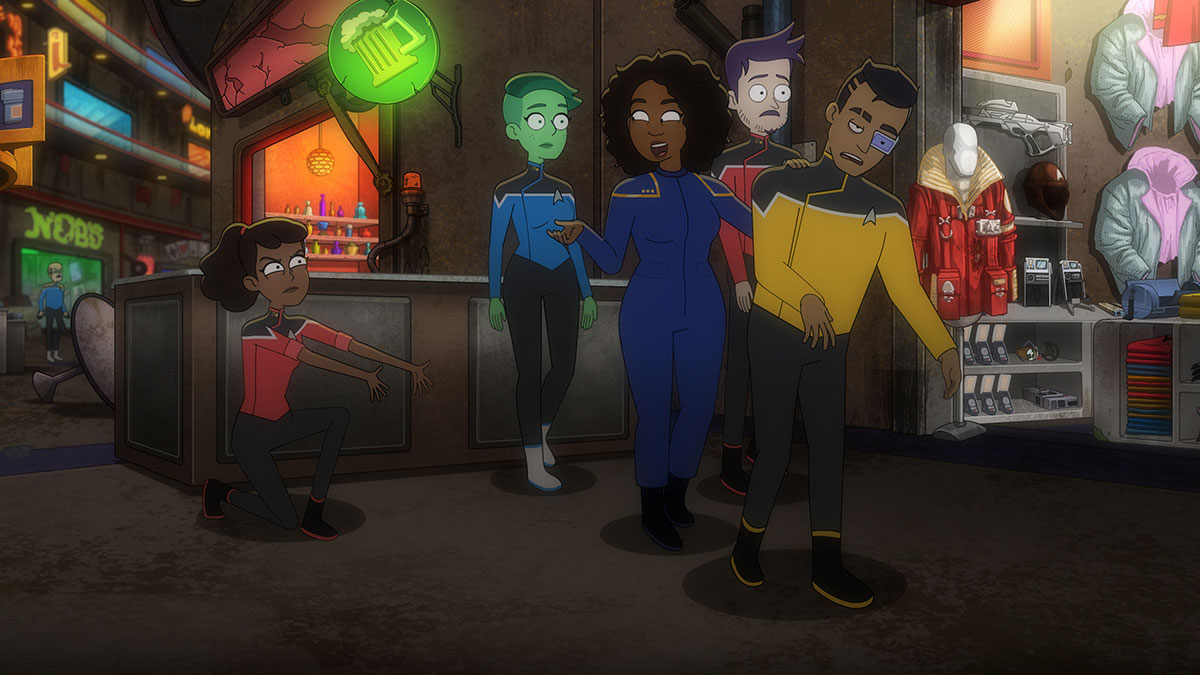
- Doctor Harrison Horseberry’s Tarchannen parasite is the same one that affected Geordi La Forge in “Identity Crisis.”
- Clem is an anaphasic lifeform, the same kind of creature that haunted (and did other things) with the female members of the Howard family in “Sub Rosa.”
OBSERVATION LOUNGE
- Lower Decks absolutely nails its decon chamber scene, as we had no doubt they would. Ransom’s obsession with the gel in that scene and then the rest of the episode is hilarious too. “Check me out,” says Boimler, “I’m a total T’Pol over here!”
- Noel Wells voices the Starbase 80 and Cerritos computers in this episode.
- Mariner rightly points out that as a 30-something El-Aurian, Kassia Nox doesn’t have anything special about her, a hilarious joke in reference to the fact that the El-Aurians we’ve met before in Star Trek only appear to have distinct behaviors because of their age and wisdom.
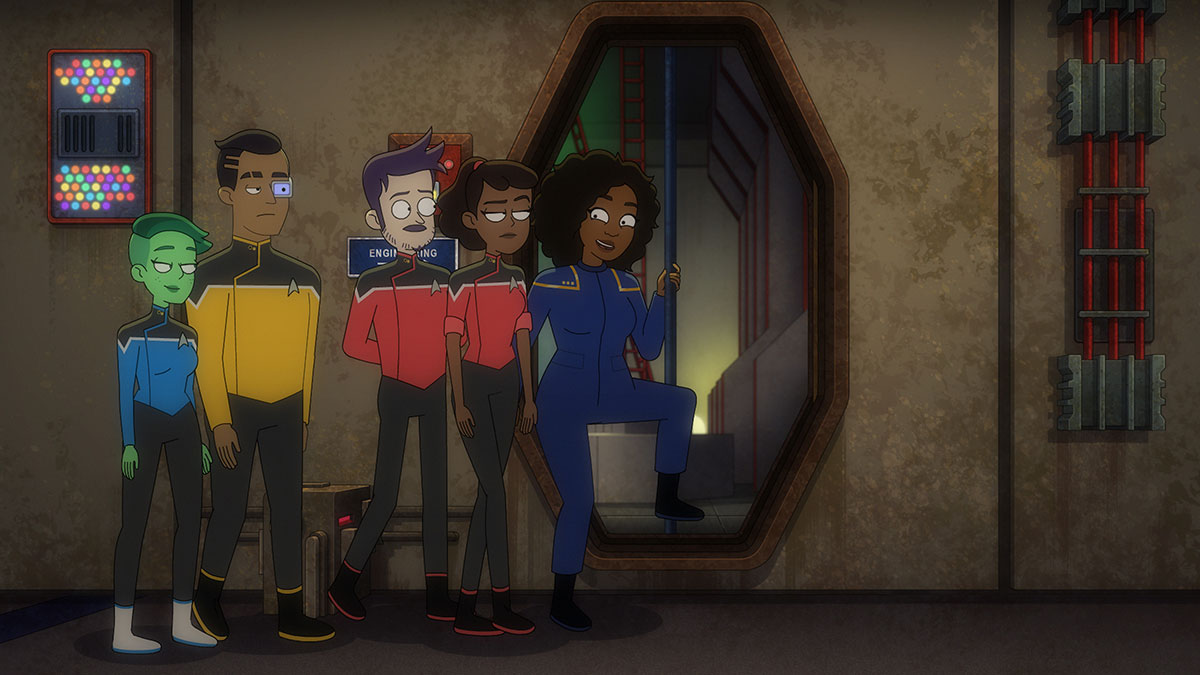
“Starbase 80?!” provides a fun complexity and depth to a hilarious punchline to a joke from three seasons ago, and continues to establish Lower Decks’ own unique corner of the Star Trek universe filled with its own original characters and concepts. The “find your place” theme might be a little heavy handed across the first half of this season, but honestly, given the world we’re living in right now? I could probably use hearing it five more times. .
Luckily, there’s five more episodes of this season of Lower Decks as we transition towards the end of the season — and the upcoming series finale.
![]()
Star Trek: Lower Decks Season 5 continues next week with “Of Gods and Angles,” premiering November 21 on Paramount+.

